Created in the Laboratory (aka It's Alive!!!) – a new type of enclosure
A little math problem for you :

About a month ago the lab received ten oversized, bound Cincinnati newspapers from PLCH needing some type of enclosure. Enclosures/boxes are usually a piece of cake here in the Preservation Lab. We have an arsenal of great enclosure options, from tuxedo boxes to corrugated or cloth covered clamshells. However, these newspapers posed a big problem…
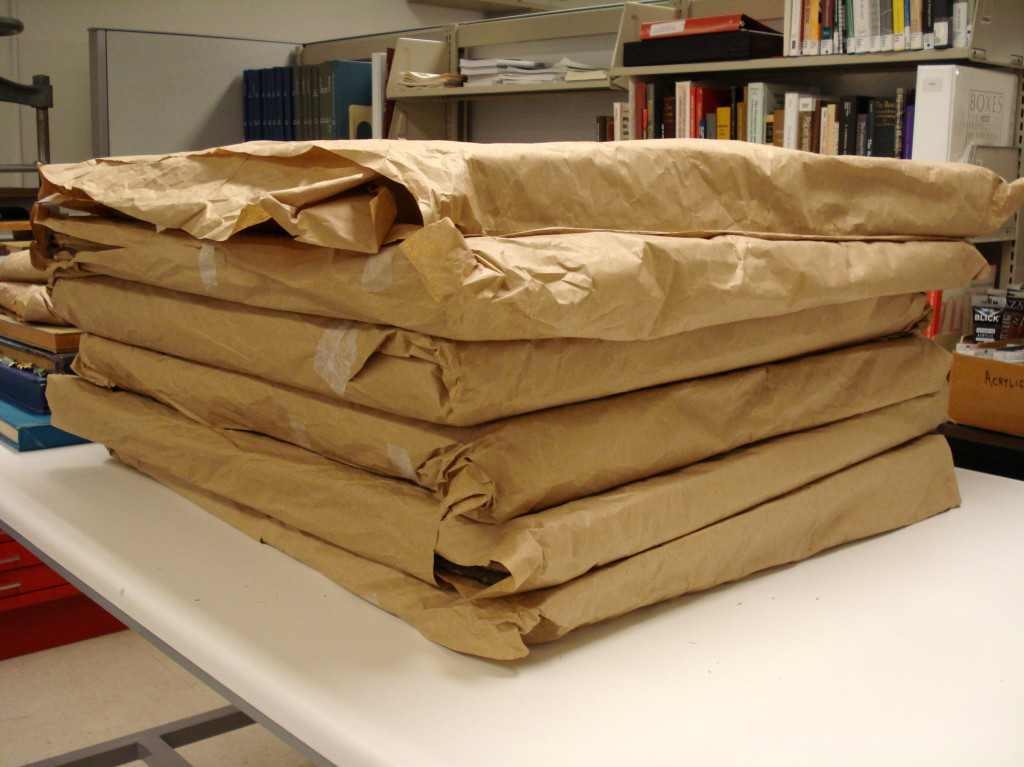
The conservation technicians quickly decided that cloth covered clamshell boxes would not be cost effective, because of the cost of materials/supplies and labor, and ultimately wouldn’t be able to withstand the weight of these items. We also realized that the clamshell structure (whether cloth or corrugated) was not ideal for accessing the heavier newspapers. While the side access that a clamshell provides would be essential for these large items, maneuvering the bound newspapers out of a clamshell box would be extremely difficult for the average patron and might lead to dropping the item and harming it and/or the individual. Also, due to the sheer dimensions of the newspapers, table space was also a factor in choosing the right enclosure. The conservation techs ultimately agreed that a box with one wall that could fold down for easy access and an accompanying lid would be the best option. To us, corrugated board seemed like the obvious choice because it is inexpensive, strong, and we have an ample supply of it. So, off we went on our journey to create the perfect box for these bound newspapers.
We began by using instructions for a two-part corrugated box that our last conservator, Kathy Lechuga, so graciously shared with the lab. We liked this enclosure because it offered some extra support at the base since it is constructed out of two separate pieces of corrugated board that are adhered together. Taking these instructions we started by only modifying them slightly so that one of the walls folded down, allowing access to the bound item.
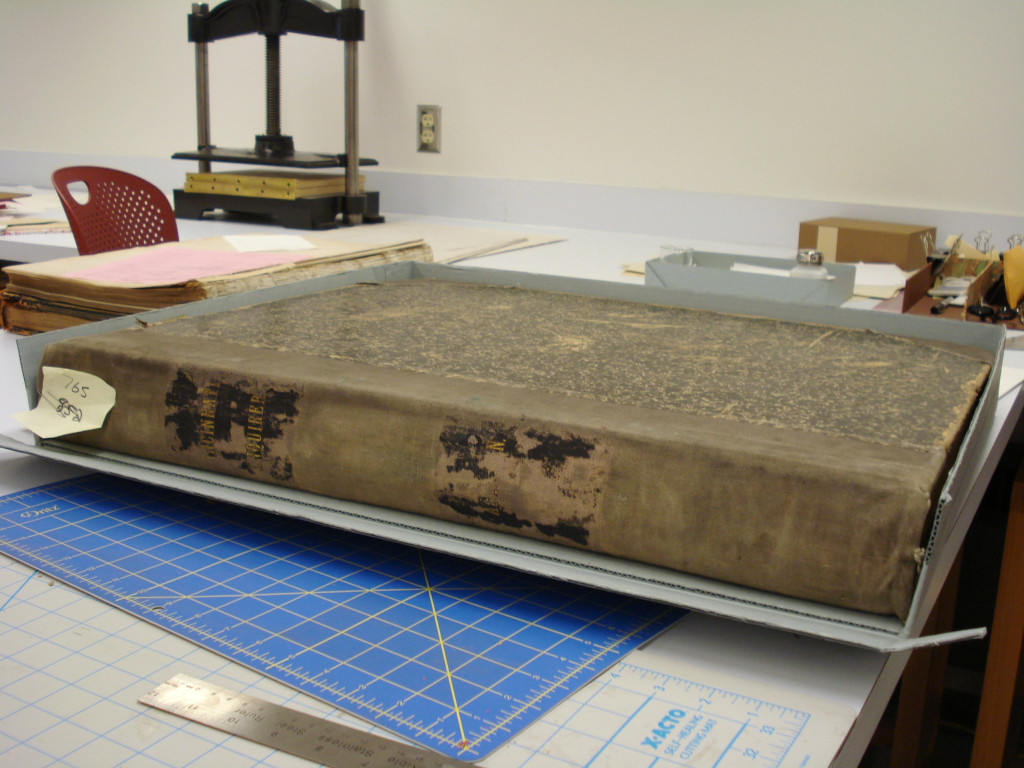
As a group the conservation techs decided to stick with the general idea of the two-part corrugated box, but add in some of the features of the corrugated clamshell (namely, the two-ply side walls) that we really liked. Thus, the real brainstorming and number crunching began.
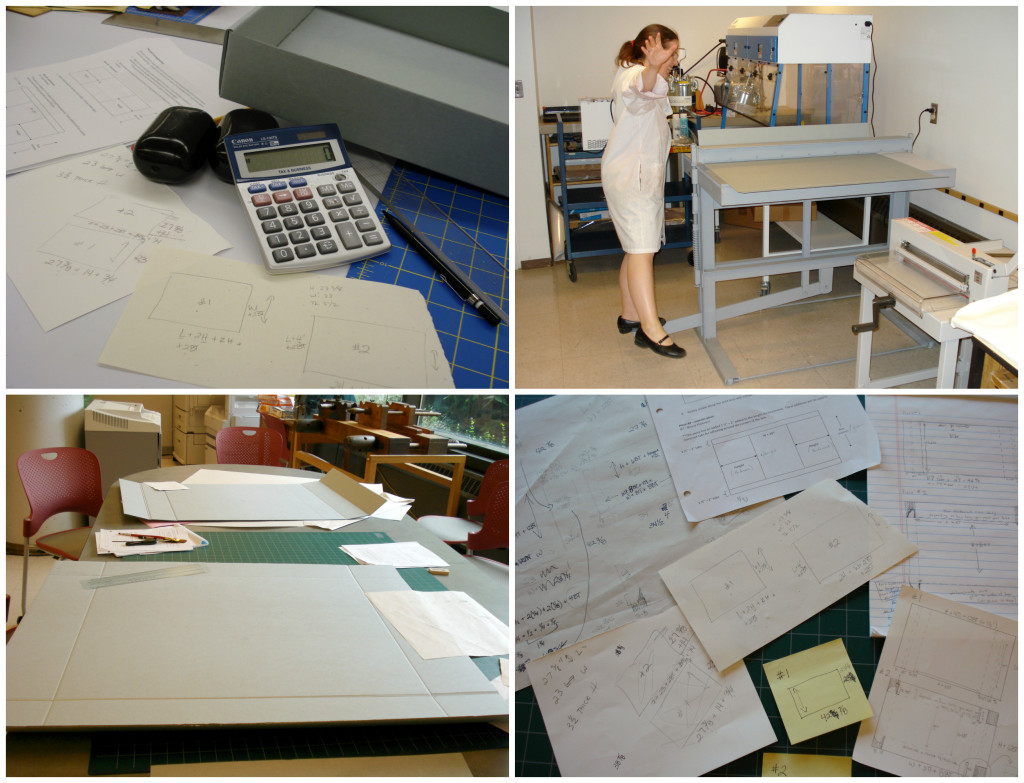
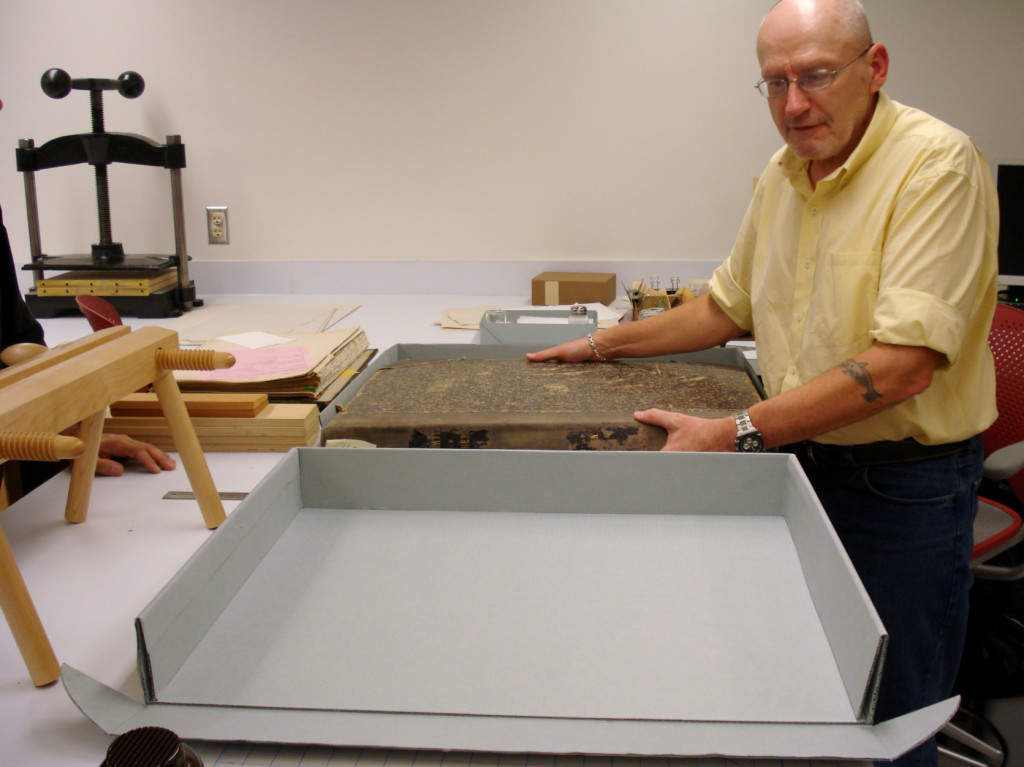
On day three Veronica and I did some final tweaking of the measurements and proportions. Then we started working on putting together instructions for the box, which we began calling the “Two-Part Sturdy Corrugated Box with Side Opening” (not the catchiest of titles, but pretty self-explanatory).
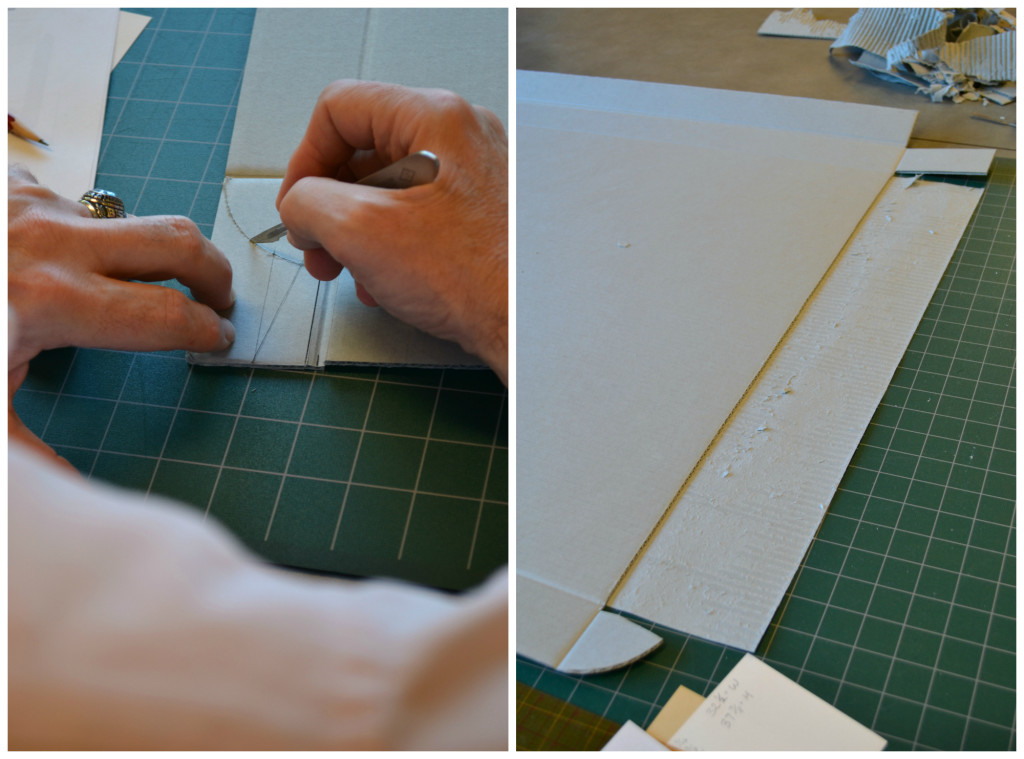
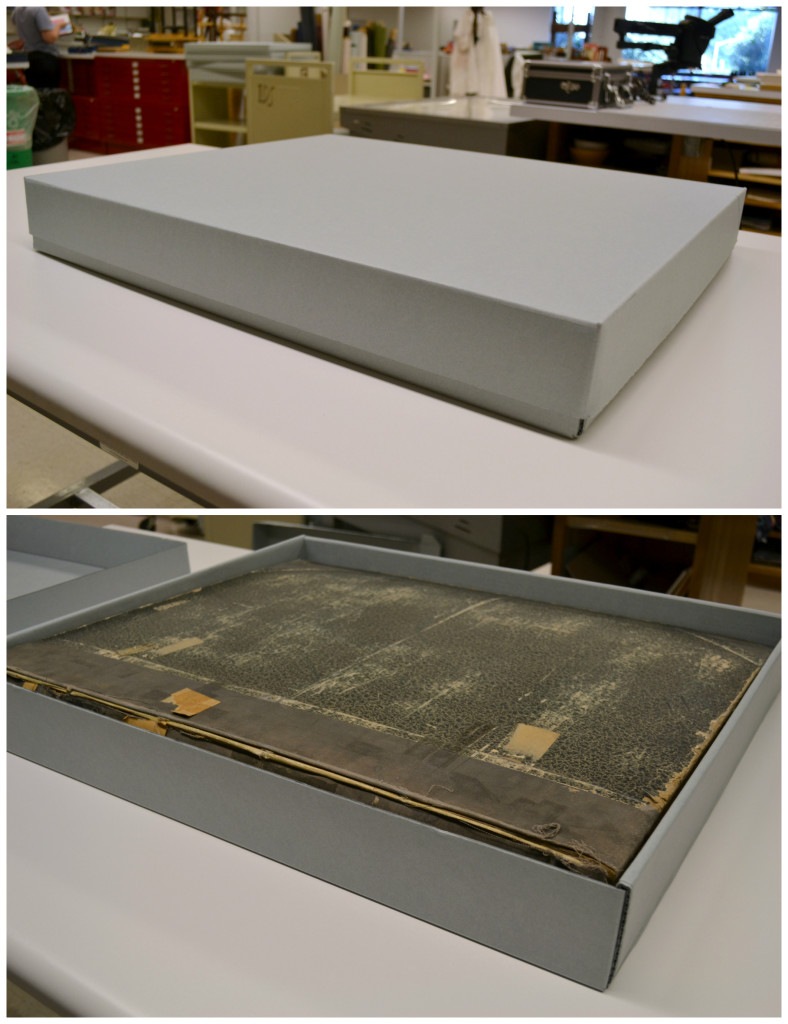
A couple more tweaks to the instructions and diagrams and we were good to go. We now had a box that was sturdy yet cost effective, and allowed access to the bound items inside. And though it may not last forever, a replacement box would be both inexpensive, because of the corrugated board, and easy to produce, now that we have our handy-dandy instructions.
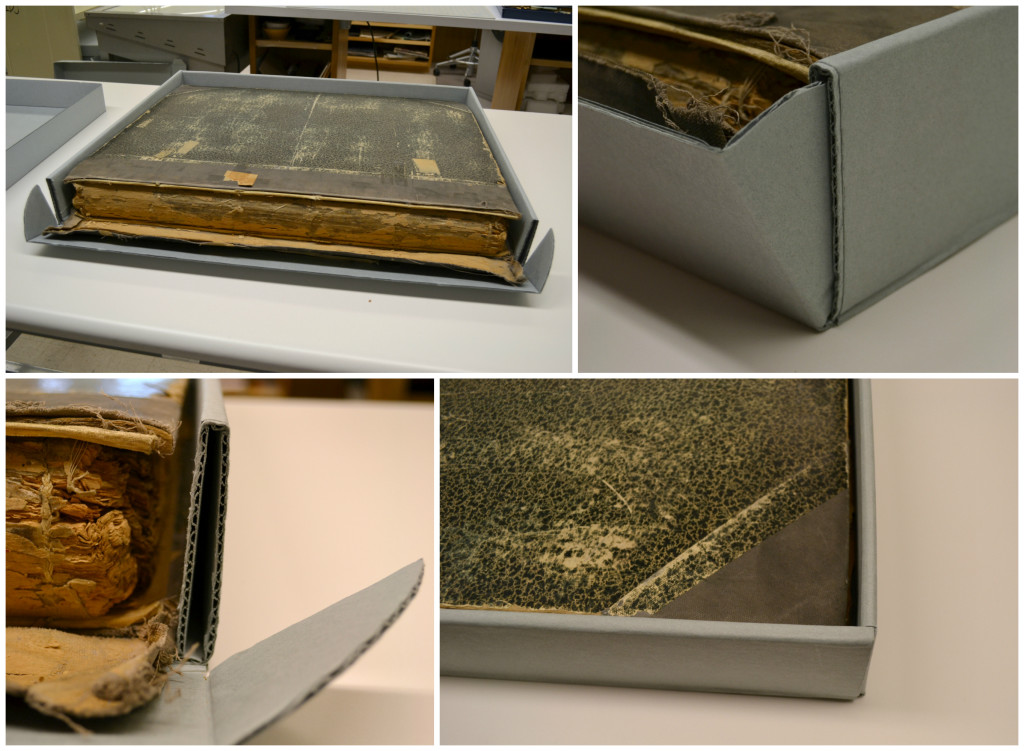
If you find yourself in need of sturdy corrugated box with a side opening, please feel free to check out our instructions.
Jessica Ebert (UCL) —- Conservation Technician
